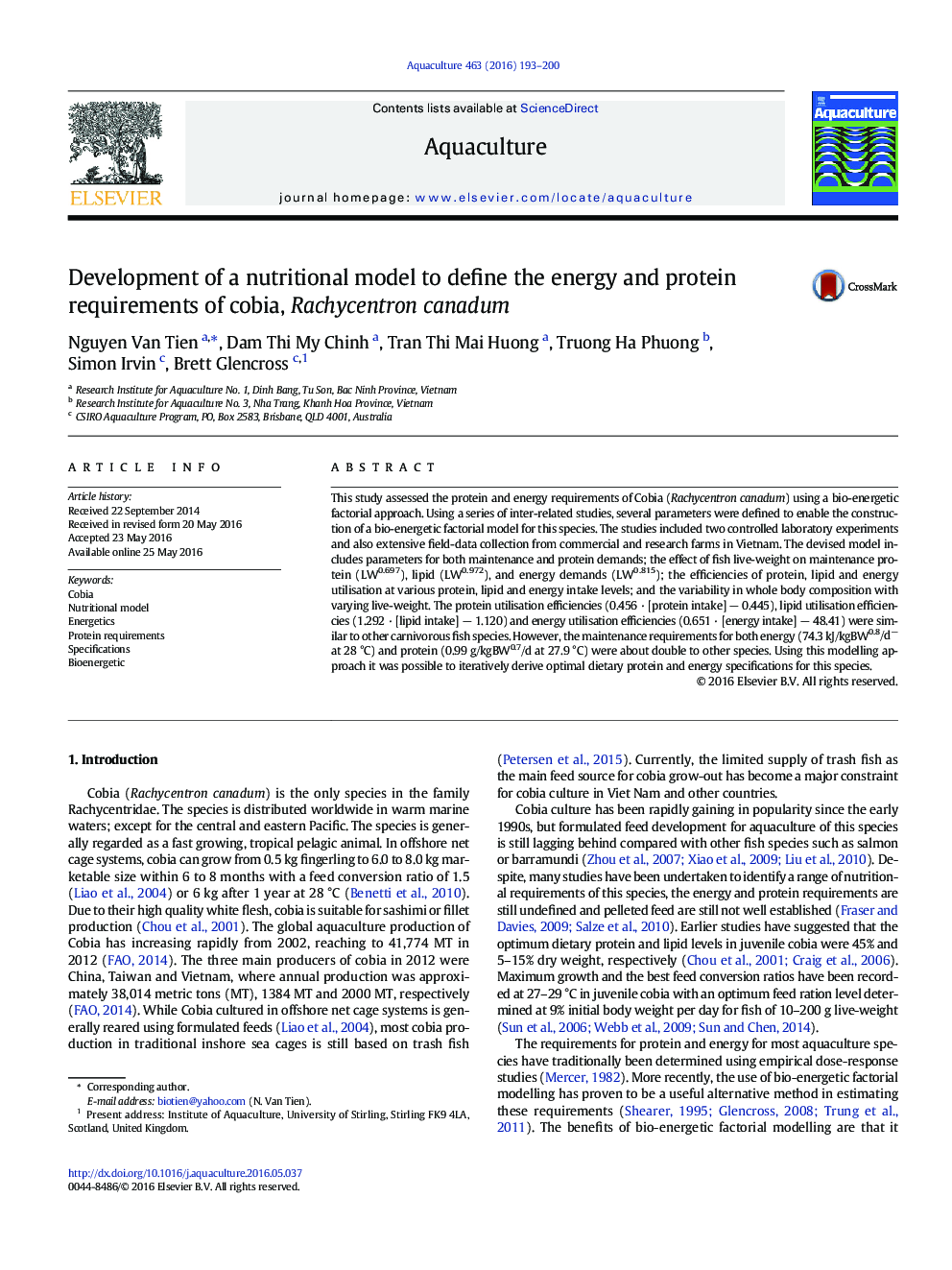| Article ID | Journal | Published Year | Pages | File Type |
|---|---|---|---|---|
| 2421344 | Aquaculture | 2016 | 8 Pages |
•This paper describes a series of studies designed to determine the energy and protein requirements of cobia, Rachycentron canadum.•The bio-energetic factorial model is possible to iteratively derive optimal energy and protein specifications of cobia.
This study assessed the protein and energy requirements of Cobia (Rachycentron canadum) using a bio-energetic factorial approach. Using a series of inter-related studies, several parameters were defined to enable the construction of a bio-energetic factorial model for this species. The studies included two controlled laboratory experiments and also extensive field-data collection from commercial and research farms in Vietnam. The devised model includes parameters for both maintenance and protein demands; the effect of fish live-weight on maintenance protein (LW0.697), lipid (LW0.972), and energy demands (LW0.815); the efficiencies of protein, lipid and energy utilisation at various protein, lipid and energy intake levels; and the variability in whole body composition with varying live-weight. The protein utilisation efficiencies (0.456 · [protein intake] − 0.445), lipid utilisation efficiencies (1.292 · [lipid intake] − 1.120) and energy utilisation efficiencies (0.651 · [energy intake] − 48.41) were similar to other carnivorous fish species. However, the maintenance requirements for both energy (74.3 kJ/kgBW0.8/d− at 28 °C) and protein (0.99 g/kgBW0.7/d at 27.9 °C) were about double to other species. Using this modelling approach it was possible to iteratively derive optimal dietary protein and energy specifications for this species.
